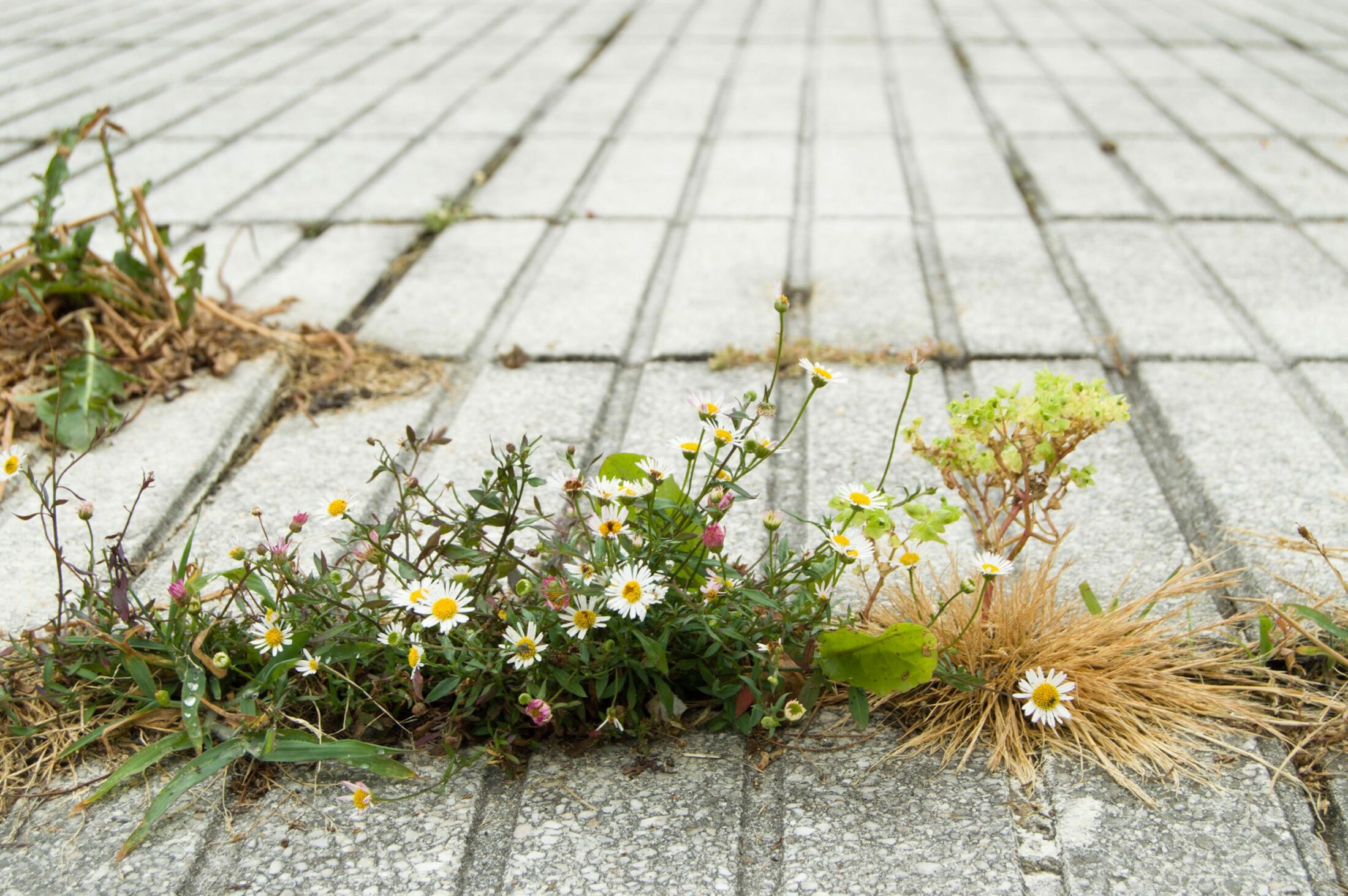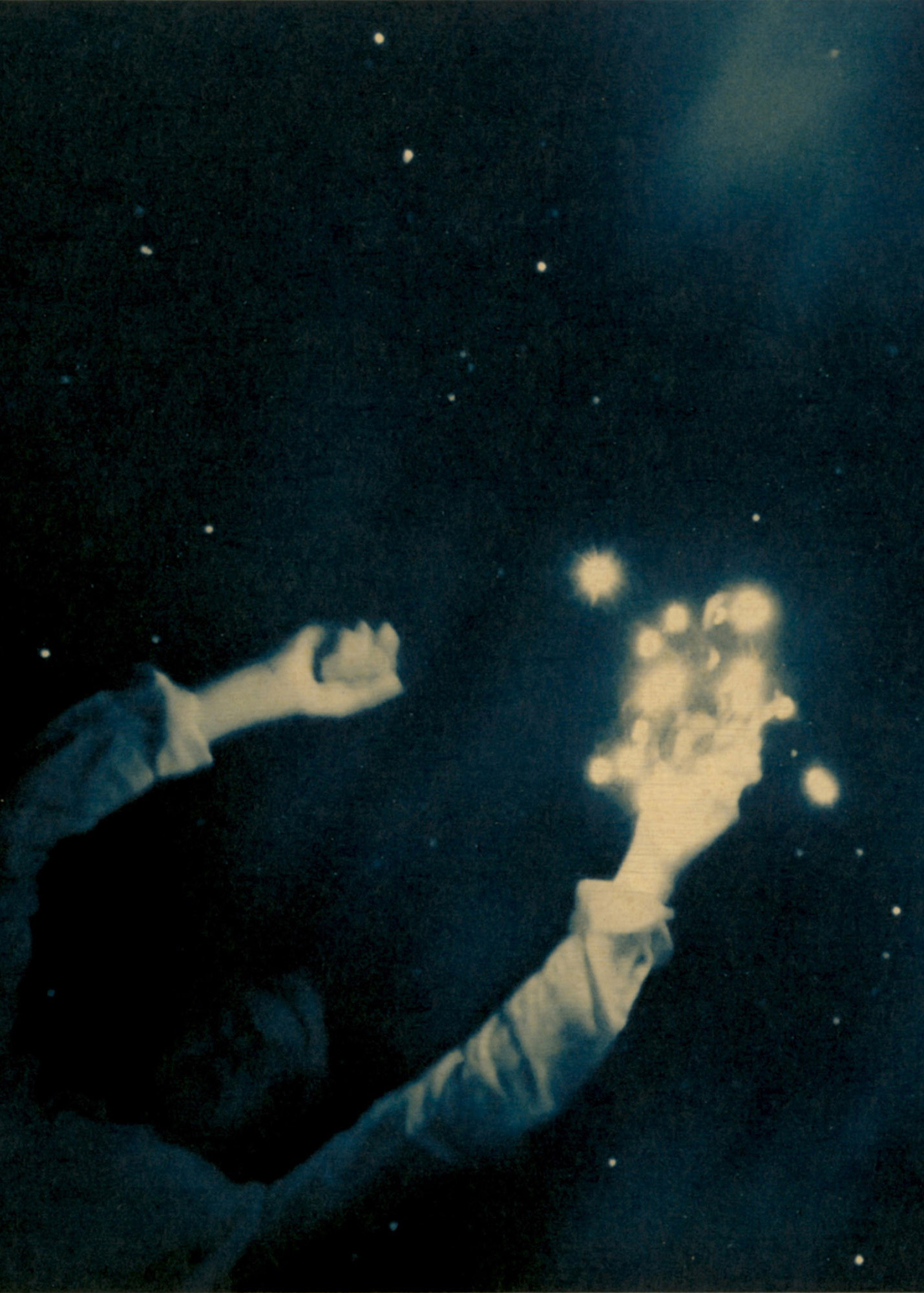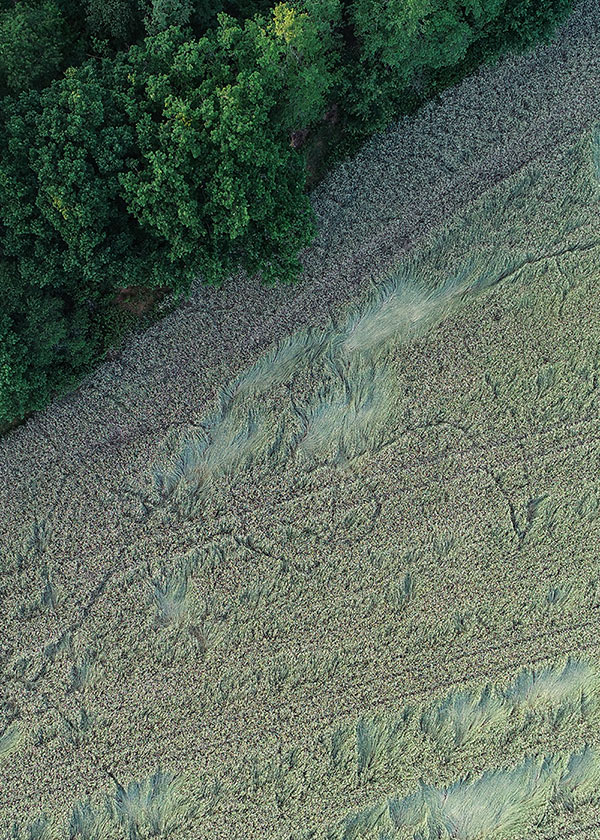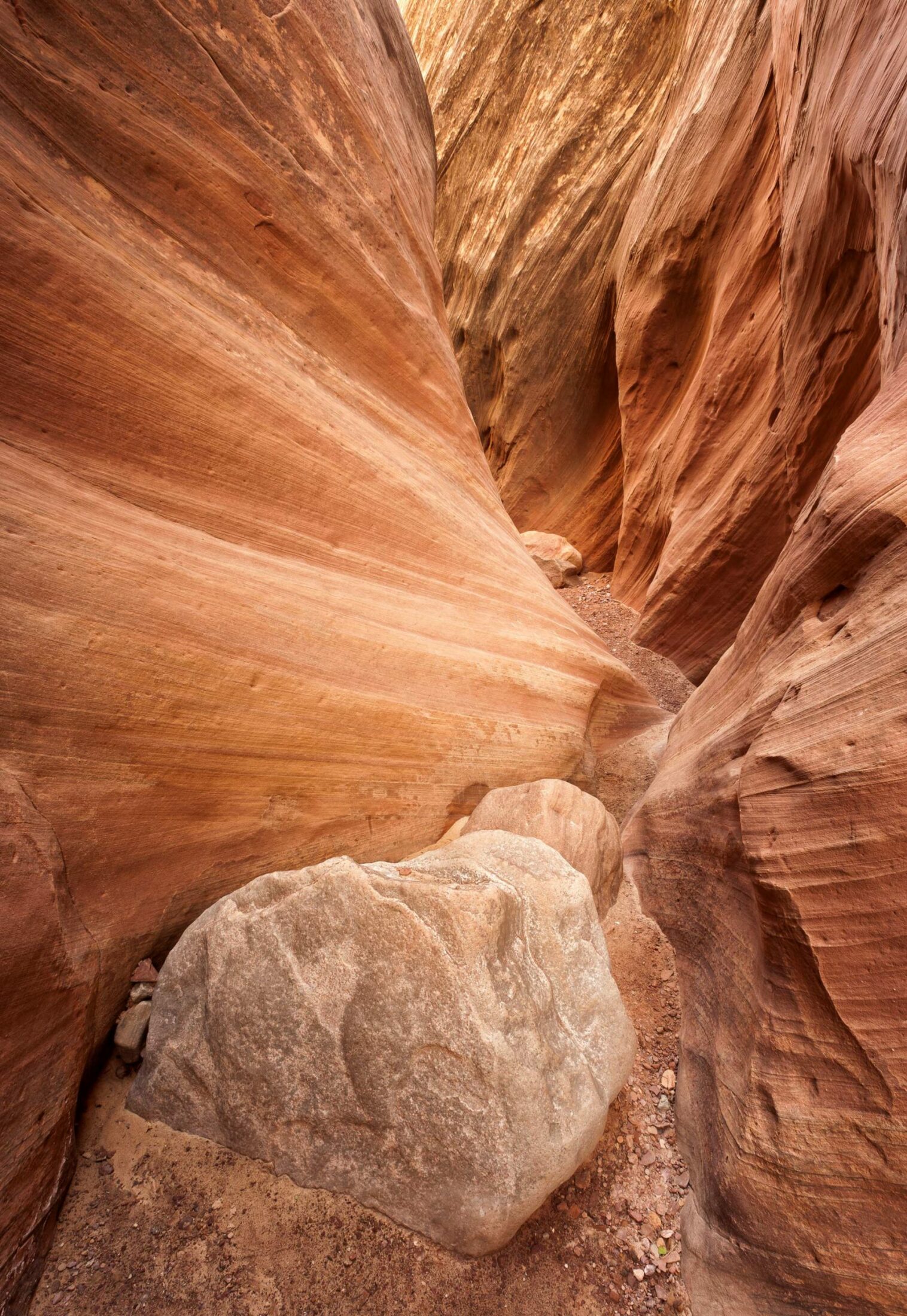
Photo by Luis Diaz Devesa via Getty Images
Pathways in the Urban Wild
Lucy Jones is a journalist and author living in England. Her books include Foxes Unearthed: A Story of Love and Loathing in Modern Britain, winner of the Society of Authors’ Roger Deakin Award, and Losing Eden: Why Our Minds Need the Wild, winner of the Society of Authors’ K Blundell Trust Award. Her writing has appeared in BBC Earth, BBC Wildlife, The Guardian, and The Independent.
As Lucy Jones and her daughter encounter wildflowers in a housing development, Lucy considers the healing benefits of an attentive relationship with the living world and the complex barriers to that relationship within urban areas.
Five petals in the absolute definition of scarlet. Ultraviolet purple center with a baby pink core. Crimson pink stamens ending with all-important anthers in sunshine yellow.
It was sunny, so the flower was open. Serendipity and the sublime, in broken concrete. We looked up to see the red kite circling the construction site, and swifts screaming through the skies, echoing the wonder at our feet.
I’ve been taking my three-year-old daughter on “wildflower safaris” on our street, seeking beauty in small handkerchiefs of land and patches of soil beside the building site. During the height of lockdown, this was our one mandated walk outside, for just an hour. We inhaled as much life as we could find.
At first, there wasn’t much to see. I live on a big, wide road that feeds into the center of a town in the English countryside. It’s a bare road compared with other tree-lined avenues nearby, with a few, small trees dotted about. Across the street is a large construction site where they are building around six hundred new homes. I can see the deep-green countryside on the horizon over the scaffolding and breeze blocks; in our ward, there is an under-provision of open space, and the immediate area looks very industrial and urban.
But as we looked, and looked some more, our eyes adjusted. And something else happened too.
I want to tell you about the magic on my street. The borders of the road, left unmown by a council busy with the virus, became banquets of nectar for pollinators and brimmed with shapes, patterns, colors, scents. Clover in different shades—dusky pink, candy-floss, a memory of pink—spread among the sharp oranges and lemons of bird’s-foot trefoil. Bees sucked sweet sap. Giant oxeye daisies with their disc-like yolks shivered and quivered in the breeze. Before the clamorous engines of the cranes and diggers were turned on again, we heard the ticker-tape of grasshoppers and the honeyed drones of bumblebees.
We had time to consider individual dandelion seeds, the brown hard nub like a handle, then the central tightrope ending in a splayed inside-out umbrella: one o’clock, two o’clock, three o‘clock. My daughter’s wicker collecting basket would be full by the time we got home. Our spirits were full, too, with poppies, thistles, valerian, rosy garlic, borage.
Our lion, our leopard, was found among metal barriers and builders’ rubble. The noise had started to crank up again—various industrial tones and staccato beats—and the roads were newly busy. But at our moment of discovery—Quick! Come and look at this!—we didn’t hear any of it; we didn’t hear the fears of illness, the daily death toll, the anxieties of living in a society predicated on destruction and inequality, the Arctic reaching 100.4°F. Instead we zoomed in: I crouched down with my knees on the tarmac (my daughter is short enough to enjoy tiny wonders) and observed, closely, a scarlet pimpernel.
Why did we go in search of worms and shepherd’s purse and starlings? Spring was unfurling, and looking closely, actually noticing, truly seeing, became a grip on hope. It was also a meditative escape. A little later, setting out to find snails in the warm summer rain, examining the different helix patterns, forced us to focus on the present while our subconscious was trying to furiously process what it meant to be in a pandemic.
What happens to our minds when we hear a cuckoo, as I did in lockdown for the first time since childhood? What happens to our emotional selves when we feel stressed out and decide to go to the woods or the river? I’ve spent the last eight years researching the relationship between human mental health and the natural world for a book called Losing Eden. After a period of ill health, I wondered what was happening to my mind, body, and brain when I went to the marshes, or the sea, or the rivers for healing. Soon, the question flipped, and I explored how our modern-day disconnection from the natural world, and living in societies involved in the degradation of the earth, affects our minds.
I don’t take my young children on “wildflower safaris” simply because it’s a good activity, I’m personally seeking the medicine of connection with the rest of nature. So what, exactly, does that mean? What’s happening to my body and mind?
Studies suggest that when people spend over twenty minutes in “urban nature,” levels of two physiological biomarkers of stress—salivary cortisol and alpha-amylase—drop.
If it’s been raining, and I can smell petrichor—that metallic, ferric scent of the earth after it’s rained—then brainwave activity linked to calmness and relaxation may be triggered. Listening to birdsong rebalances my nervous system. Watching the daisies move in the wind soothes mental fatigue. It’s an example of “soft fascination,” which can restore attention, according to Attention Restoration Theory, developed by leading academics Rachel and Stephen Kaplan.
Then, there’re fractals. Fractals are abundant in the living world. From ferns to lightning, salt flats to ocean waves, and, for the purpose of my urban nature safari, plants and trees and sprays of “weeds” that peep through the cracks in the pavement. The deep-green leaves on these plants are fractal, meaning a self-repeating pattern of a shape that varies in scale, rather than being repeated exactly. Once you know what fractals are, you’ll see them everywhere.
Richard Taylor, Professor at the University of Oregon, discovered that patterns with a fractal dimension of 1.3 (most fractals in nature fall between the 1.3 and 1.5 interval) provoked brain waves suggesting a relaxed but focused state. It turns out that the retinal vessels in our eyes are fractal, so when they view a fractal shape, our eye locks into place, so to speak. Taylor called this “physiological resonance.” We often forget that humans spent 99 percent of our evolutionary history in contact with the natural world, and there may be a genetic disposition within us to prefer fractal shapes, like Savannah-type shaped trees such as acacias, as well as landscapes with prospect and refuge and water sources. When it feels relaxing to look at these sprays of weed in the cracks in the pavement, it’s partly a response to an inherent genetic memory.
When we go out looking for wildflowers, I’m nervous about becoming attached to these small areas beside the road. I imagine the wild growth will be pulled up, or mown, or killed with pesticide. At the moment, these tiny patches of green feel like an ignored network, where nature is allowed to thrive because no one has noticed it quietly regenerating, because the system—which would normally remove these overgrown patches, which would see them as errant—has been under stay-at-home orders. The scarlet pimpernel is living in an area that is being turned into houses. Judging by the other new dwellings, where there are only token scraps of greenery, the pimpernel is an aberration, an anomaly that will soon be corrected.
There is a slug on the footpath, like a stick of shiny licorice. My three-year-old is delighted. We are walking to a wild urban cemetery which is a five-minute walk from our house. It’s an oasis of peace, where the naturalist Gilbert White, the first ecologist in England, used to play in his school days. We trace his paths, looking for baby rabbits, wood sorrel, blue speedwell, peacock butterflies and other examples of the littleness he recorded and celebrated. In the trees, we see custard slabs of the goldfinch and a “robin breast,” my daughter’s favorite bird. A wren smooths from a clump of brambles to a nettle patch. We tear off a leaf from the walnut tree and sniff its unusual nutty lime scent.




